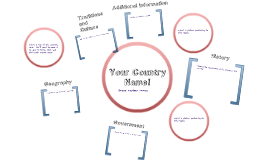COLOMBIA COUNTRY
Transcript: The civil wars in Colombia comprises a series of internal conflicts that occurred during the nineteenth century. If the internal revolts of the Federal States, between 1812 and 1886, discounted Colombia suffered nine civil wars scope nacional.1 addition there were other fourteen under regional and countless revueltas.2 The "endemic civil wars" that Colombia lived after independence were characterized by the importance that had the guerrillas in their development. The facility to train them guaranteed the continuing conflict and instability gubernamental.3 However, it would be only in 1848-1849 when the two faced each other permanently blocks constituted throughout the rest of the century: liberal and conservadores.2 Each aimed to get the power of the central government to retain and use it to exclude rival confrontation worsened periodically until the populace mobilized to go to the armas.4 With their conflicts, both parties would drag to rural people and to a lesser extent, of the cities in the polarization of the nation. The atrocities of the wars which did not differentiate between combatants and civilians opponents only increased the hatred between blue (conservative) and red (Liberals) .4 LIFE POLICY OF COLOMBIA COLOMBIA COUNTRY The cuisine of Colombia is the result of the fusion of food, culinary practices and traditions of local, European (mainly Spanish) and African American Indian cultures. Although there is no consensus on a single plate representing all Colombian cuisine, they highlight the arepa and stew as the most representative. Other prominent regional dishes are paisa tray, santafereño ajiaco, Tolima and Huila and the nickname lechona coastal cheese, among others. And tambie are typical dishes of Colombia The lulada is a typical drink of Valle del Cauca, especially Cali, capital of departamento.1 Arepa with sausage is a Colombian fast food. Traditional dish of the Antioquia gastronomy, "paisa tray". Santafereña traditional dish of the regional cuisine, chili has three different types of potatoes. . The diversity of wildlife in Colombia essentially varied Creole cuisine, with little influence from foreign cuisines arises. Colombian dishes in preparation and ingredients vary by region and incorporate the traditions of Spanish, mestizo and African cultures. Some of the most common ingredients in the preparations are cereals such as rice and corn, root vegetables such as potatoes and cassava varieties of legumes (beans), meat as vaccine, chicken, pork, goat, guinea pig and other wildlife, seafood. It is also important variety of tropical fruits such as mango, banana, papaya, guava, lulo and passion fruit. Colombia has a regional dish, but not a national, but are recognized stew and corn bread in its different variants. Among the most representative regional dishes are santafereño ajiaco, paisa tray, nicknamed cheese, suckling pig Tolima, castor bean or beef to the plains, the mute Santander, the tamale and fish, especially in coastal regions. 2 The borders of the Republic of Colombia is located in the northwestern corner of South America and has a continental area of 1,141,748 square kilometers over a maritime area of 928,660 km². Colombia is the world's twenty-sixth and the fourth largest country in South America after Brazil, Argentina and Peru.1 The country has sovereignty in the Caribbean Sea, the Pacific Ocean, the Amazon jungle, the Orinoco basin and the Andes. Colombia is administratively divided into departments, municipalities, indigenous territories, regions and provincias.2 Numerous organizations and national and international researchers have developed geographic studies of Colombia since the nineteenth century; among which include those made by Baron Humboldt, Eliseo Reclus, Agustin Codazzi, Ernesto Guhl, among others. Currently the official entity of the Colombian geography study is the Codazzi. Between academic and consultative institutions are the National University of Colombia, the Universidad de los Andes and the Geographical Society of Colombia The dances in Colombia arise primarily from European, African, indigenous, Andean, and also cultures, but in smaller amounts, Persians. Dances, and dances of Colombia, vary depending on each region or department. Colombia's wealth, variety of dances, has traditionally become a culturally important country in Latin America. (Other regions said that Colombia and dances are a world revolution. The eastern region - Llanos Orientales The Andes - Andes The western region - Pacific Colombia The southern region - Including Amazon San Andres and Providencia COLOMBIAN CULTURE Colombia policy has been characterized throughout its history, a dominant bipartisanship; It is of the few Latin American countries where the Liberal Party and the Conservative Party, as hegemonic groups survived until the twentieth century and in force even in the XXI century. Colombian history has also been marked by political radicalism that has triggered numerous

















